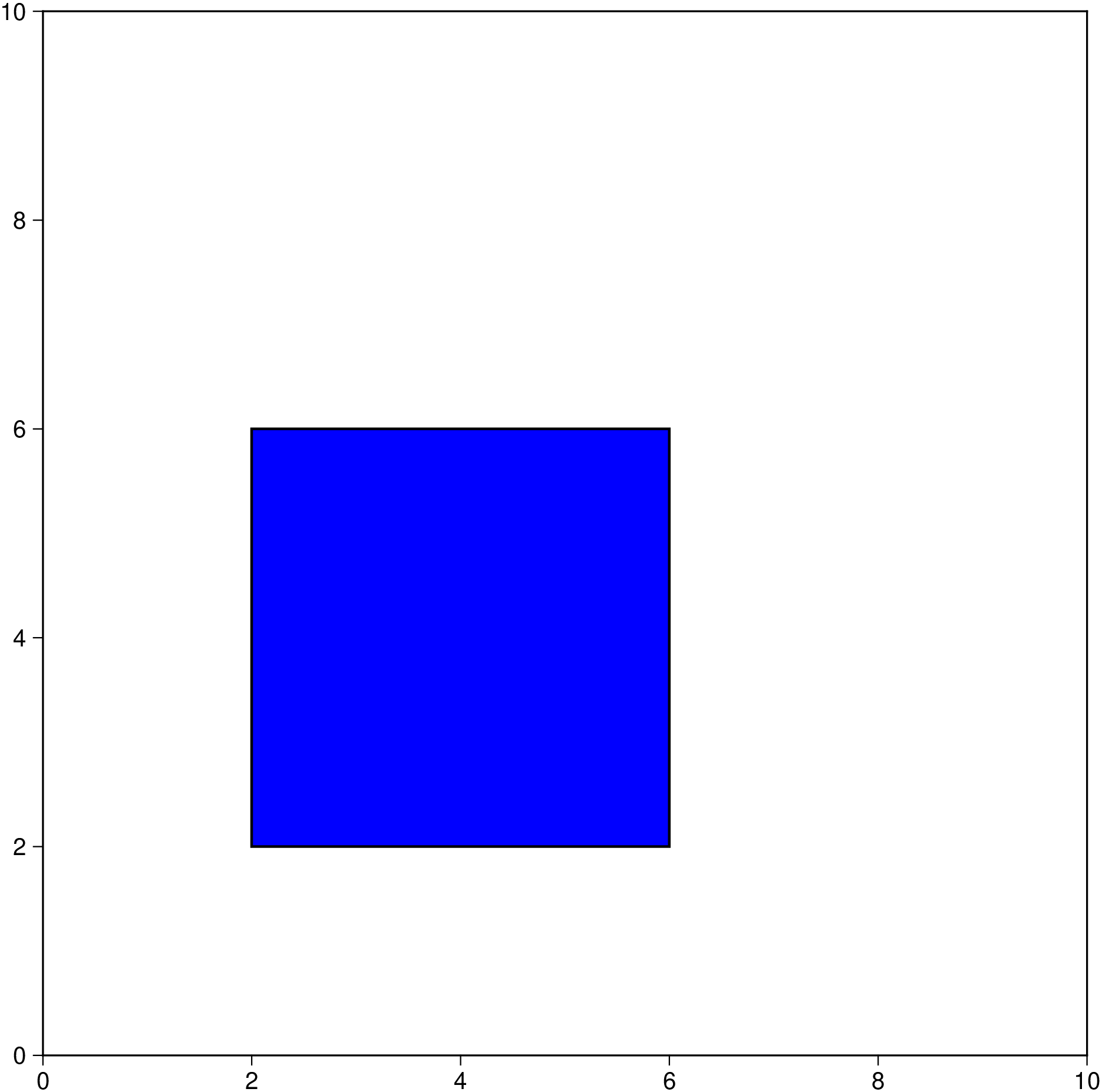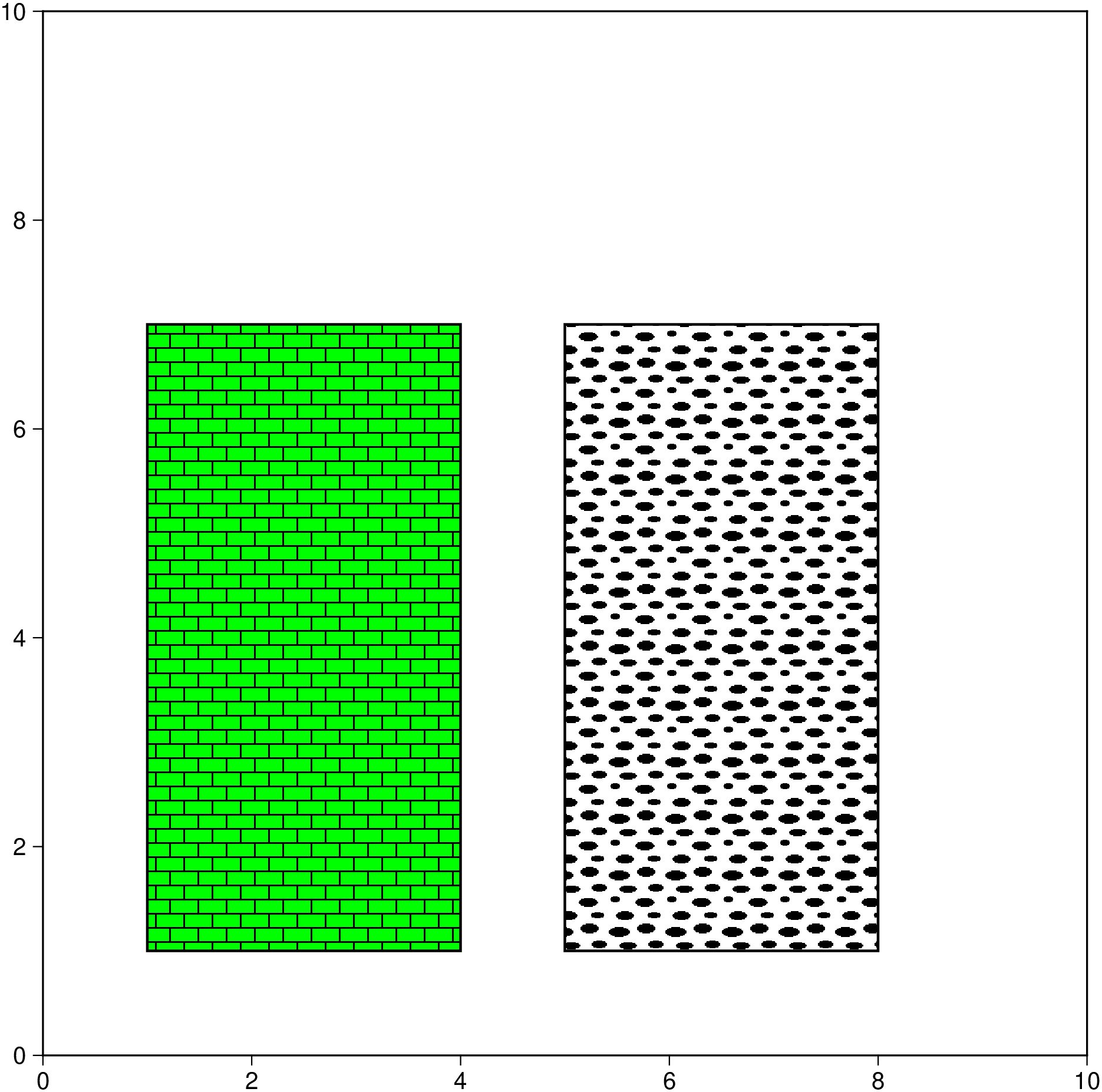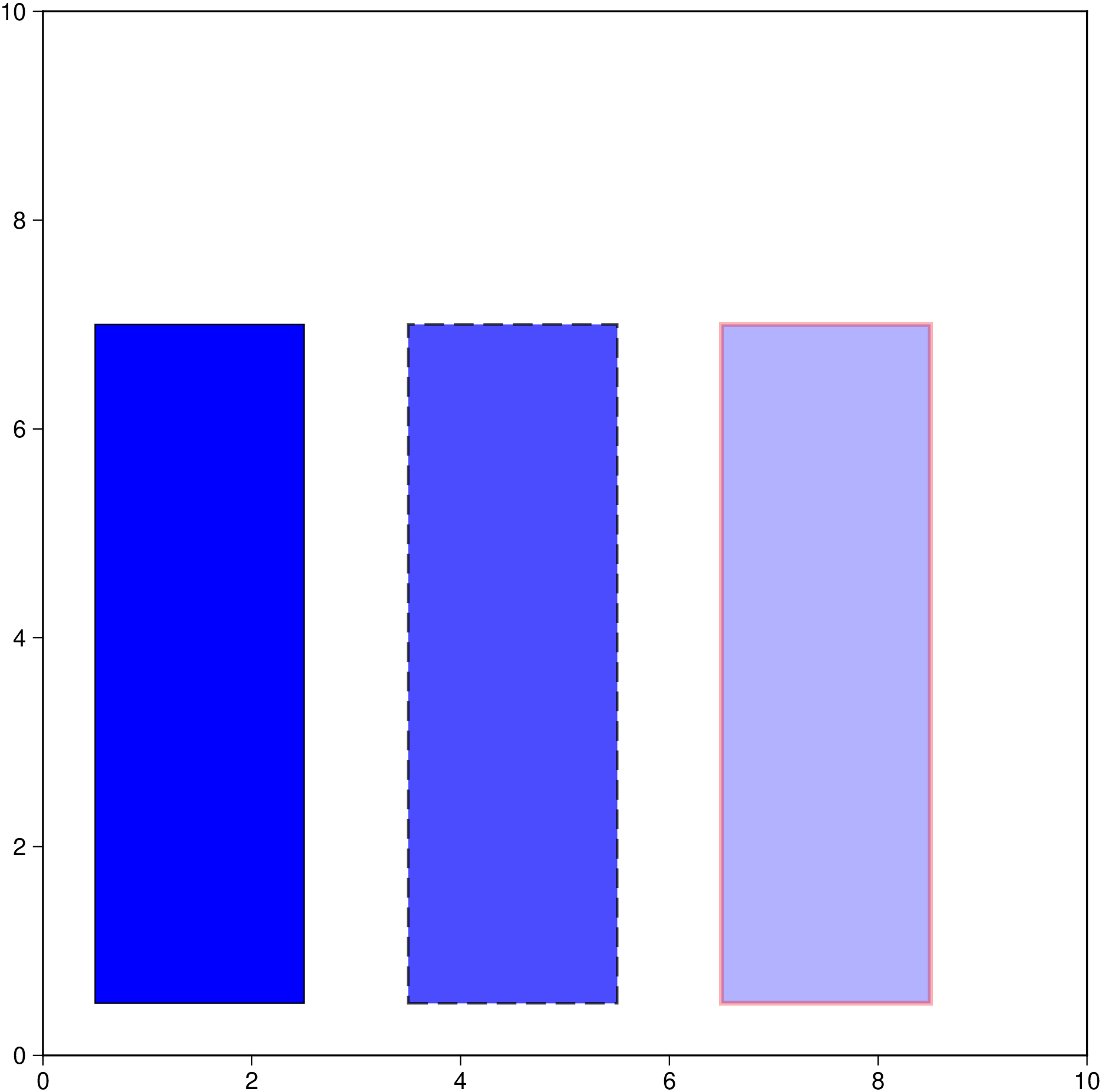Patterns & trasparency
Simple filled rectangle
using GMT
rect = [2 2; 2 6; 6 6; 6 2; 2 2];
plot(rect, region=[0 10 0 10], lw=1, fill=:blue, axes=:a, aspect=:equal, show=true)Rectangles with patterns
Now add some patterns. The full pattern syntax is explained in GMT patterns but basically we are using pattern number 20 at 200 dpi and a blue background for the left rectangle and pattern 89 also at 200 dpis for the right rectangle.
using GMT
rect = [1 1; 1 7; 4 7; 4 1; 1 1];
plot(rect, region=[0 10 0 10], lw=1, fill="p20+bgreen+r200", axes=:a, aspect=:equal)
plot!([4 0].+rect, lw=1, fill="p89+r200", show=true)Rectangles with transparency
This variation creates rectangles with 0, 30% and 70% transparency as well as different boundary lines.
using GMT
rect = [0.5 0.5; 0.5 7; 2.5 7; 2.5 0.5; 0.5 0.5];
plot(rect, region=[0 10 0 10], lw=0.5, fill=:blue, axes=:a, aspect=:equal)
plot!([3 0].+rect, lw=1, ls="--", fill=:blue, transparency=30)
plot!([6 0].+rect, lw=2, lc=:red, fill=:blue, transparency=70, show=true)
© GMT.jl. Last modified: June 07, 2023. Website built with Franklin.jl and the Julia programming language.
These docs were autogenerated using GMT: v1.33.1


